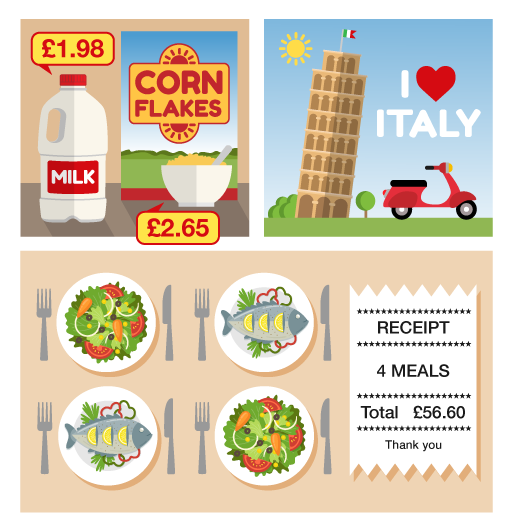4.2 Calculations using decimals
When you make any calculation with decimals – that is, addition, subtraction, multiplication and division – you may use a calculator. When using a calculator it is very important to make sure that the decimal point is in the correct place. If you don’t, you’ll get the wrong answer.
Now try the following activity. Remember to check your answers once you have completed the questions.
Activity 13: Using decimals
- You buy a box of corn flakes for £2.65 and a bottle of milk for £1.98.
- a.What is the total cost of these items?
- b.You pay for them with a £5 note. How much change should you get?
- You go on holiday to Italy. The rate of exchange is £1 = €1.4. How many euros do you get for £8?
- You go out for a meal with three friends, and the total cost of the meal is £56.60. You decide to split the bill equally. How much do each of you pay?
- Convert 6.25 m to cm.
Answer
- The answers are as follows:
a.Add the cost of the two items:

(Keep the decimal points in line.)
The total cost of the items is £4.63.
b.Take away the total cost from £5:

You should get 37p change from £5.
-
Multiply the exchange rate in euros (€1.4) by the amount in pounds (£8):

So £8 = €11.20.
-
Divide the total cost (£56.60) by the number of people (4):

You would each pay £14.15.
-
To convert 6.25 m into cm, you need to multiply the amount by 100.
- 6.25 × 100 = 625
So the answer is 625 cm.
Summary
In this section you have learned about how:
- the value of a digit depends on its position in a decimal number
- to approximate answers to calculations involving decimal numbers
- to add, subtract, multiply and divide using decimal numbers.
This will help when working with money and measurements.

